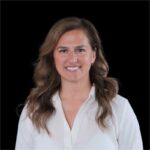For the first time since 1989, Malcolm Cutts-Watson finds himself no longer at the front end of running a captive insurance business, although that doesn’t mean he’s slowing down. In the wake of CWC’s merger with RISCS, Cutts-Watson tells Captive Review what his role in the newly formed business will involve, as well as details of the many other projects he will now be focusing on
The captive market was somewhat caught by surprise at the start of this year when Oliver Schofield and Malcolm Cutts-Watson announced that they planned to merge their consultancies to form a new combined entity named RISCS CWC.
The deal completed in March, with the newly formed business led by Schofield as CEO and Cutts-Watson assuming the role of non-executive chairman. It marks the end of a successful seven years of running Cutts-Watson Consulting (CWC), a project that Cutts-Watson himself admits became far bigger than what he ever anticipated when he founded the business.
“I’ve been running Cutts-Watson Consulting for seven years and that’s surprised me because I thought when I started it would have a shelf life of 3-5 years maximum, and then it wouldn’t be relevant. But in fact the opposite happened,” he tells Captive Review.
He explains that with a lot of experienced heads retiring over the last few years a lot of knowledge has been lost from the captive industry. This has led to increased demand for his knowledge as well as that of other consultants who work through CWC, and, like Cutts-Watson, come from a corporate background and have a lot of knowledge to share.
“This is another thing that’s happened that I wasn’t anticipating,” he adds. “A number of people who had retired or reduced the amount of work they were doing in the market asked if they could join the organisation. We had a perfect storm of lots of new business coming in and lots of new people wanting to work for us. That was fantastic and the business has grown significantly over the seven years.”
However, now a grandfather with a couple more grandchildren on the way, he admits his priorities have changed. After running captive businesses since 1989, he says he had been looking for the best way to maintain the business while reducing the amount of time he commits to it.
“While the business was sustainable, I felt it needed more resilience, and for me I felt the way to do that was to join up with another organisation,” he explains. “One of the options would have been to sell to an organisation that needed a captive expertise, but I didn’t really fancy going back into the corporate world. I’d had many years of that previously when I was running the Willis captive operation.”
So Cutts-Watson set out to find another organisation like his that was independent, another factor he says was key, and found Schofield’s business RISCS to be the obvious choice.
“His business has also done very well and has good brand recognition. I knew all the people there and liked the way they operated, so it just seemed an obvious synergy for us to come together,” he adds.
Outside projects
However, just because he is stepping down from the front line of running a captive business doesn’t mean he won’t still be a part of the industry. On the contrary, alongside helping to build and promote the RISCS CWC brand, Cutts-Watson remains a non-executive director on two captive boards, four commercial (re)insurer boards, as well as on the board of an MGA.
He is also an active member of the Sagacious Group, a group of around 20 retired ex-captive and insurance professionals in Guernsey that want to find ways to keep helping the industry and assisting the Guernsey International Insurance Association.
In February, the group launched a new 24-module educational programme to earn a certificate and diploma in international insurance management, with Cutts-Watson editing the coursework. Next on the agenda is developing a mentoring programme to help local talent in Guernsey.
“It’s a general problem that everyone has an ageing workforce and we need to encourage the younger talent to come through,” he remarks. “Anything we can do to help, we want to do so.”
And he does a lot of work around improving the quality of independent non-executive directors (iNEDs). He is part of a group with Zurich’s Paul Wöhrmann that has spoken at ECF and the AIRMIC Captive Forum on the value of quality iNEDs, and is also part of a committee in Guernsey trying to identify and train the next generation of iNEDs for all types of business on the island.
“I’ll still be very active in the industry, it’s just I won’t be focused on my business anymore,” he says.
RISCS CWC role
Nevertheless, Cutts-Watson has high hopes for the business and wants to help Schofield make it the largest independent captive consultancy in the world.
His role in the business will see him move away from consultancy work and feasibility studies, however, unusually for a non-executive role, he will be involved in business development and helping to build the RISCS CWC brand.
“Both organisations have really strong brands already, but it’s about building on what the unique selling points of the combined business are,” he notes. “That’s now going to be a greater number of consultants, greater capacity, more jurisdictions and broader bandwidth. We just need to get that message out.”
With the merger, RISCS doubled its number of employees and took on CWC’s Guernsey office to have a presence in six regional hubs around the world. Last year, the firm made strategic hires in the Cayman Islands, Jersey, France and South Africa.
For CWC clients, he says all were extremely supportive of the merger when he informed them of it, and he will continue to act as the primary engagement partner for them.
However, he says one of the advantages in merging is welcoming new consultants to the fold and getting a fresh take on an issue through new eyes.
“There is value to the client in getting the familiarity of me, but then also the opportunity for another pair of eyes to look at things,” he says. “I don’t see them being disadvantaged, if anything they’ll be advantaged.”
Exit strategy
In terms of an eventual exit strategy, Cutts-Watson plans to stay involved with the business for at least the next two years, by which time he will be 70, and then says he will sit down with Schofield to discuss next steps. For now, though, he says he is still keen to remain involved with the business and the wider industry.
And with all the projects he is involved in, he explains this move is not a winding down, but more of a recalibration.
“It’s a readjustment, so my efforts can be spread over a broader range of things,” he explains. “A number of those will be pro bono things that I hope will be good for the future proofing of the business rather than just being about commercial success.”
As an ambassador for the business, he says he’ll still appear at captive conferences and look to help with developing new relationships and even new products.
“As the environment changes, we’ll be spending more time looking at what people need,” he notes. “One of the things we are very proud of is the fact that we have developed a boardroom review offering, so captive boards or insurance company boards can have an external appraisal of how the board is performing.”
The subject of boards is a particular area of interest for Cutts-Watson and, as he moves away from the heavy lifting of consultancy work, this is an area he believes the business can really add value to captive clients, something which will only become more important in the next few years.
“While it’s not a requirement from the regulators as such, I think it will become recognised best practice in governance to have some kind of external review,” he says. “There are a number of organisations that offer that already, but they don’t really understand the insurance or the captive world. They are taking a fortune 500 type product and trying to sell it to captives, and they don’t really need that level of complexity. They just need something that gives a quick indication of what they’re doing and maybe areas they can improve,” he concludes.






